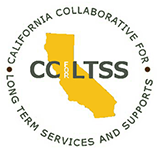It is often said that the future always begins in California. Notwithstanding the results of the recent election (in which California took a decidedly contrarian position on candidates and ballot initiatives than most of the rest of the country) California’s shifting demographics demonstrate what will be happening nationally for decades to come.
We all know about the baby boomers and how they have changed the face of our state at every stage of their lives…when they entered school, went to college, created families and bought homes, and began to need more health care. But we may not know that California is aging earlier and to a greater degree than most other states. We are getting gray sooner. The unique history of our state’s postwar population boom with millions of young people settling here and starting families means we are growing old faster than nearly any other state. At the same time we have become more ethnically diverse and will continue to in coming years.
The senior population is grouping into different segments with the “young-old” changing workplaces and living arrangements, the “middle-old” putting pressure on the retirement systems designed to cover them after work, and the “old-old”…the fastest growing group which has unexpectedly high medical costs and a growing need for assisted living arrangements and other long-term care.
In the next several decades, older Californians will grow from 11% (5 million people) to 20% (12 million people). Some areas of the state will age more than others, with more rural and small-town communities aging faster than the larger urban areas. This creates other problems because low density areas often lack healthcare and other resources needed by the elderly.
Over the next several decades the gender gap in longevity will close as more women retire from years of work and smoking cessation helps men live longer.
We all know about the increasing ethnic and cultural diversity in our state and those changes are present among the aging. While White/Caucasian seniors will increase by 132% by 2030, Hispanic elderly will grow by 390% and Asian-American seniors will increase by 254%.
The changes in California’s population will dramatically affect our state’s active workforce. There will be significant needs for caregiving and healthcare workers. And we’ll see large number of teachers, lawyers, doctors, law enforcement/corrections workers and nurses retiring at rates that exceed the ability of our universities to turn out replacements. Some shortages will be significant enough to drive up overall labor costs.
Our housing and transportation demands will change in big ways. Tomorrow’s population will need different types of housing: more universal design and designed for different living arrangements, not just single families. Communities will need to be more compact and more accessible for people with limited mobility.
Most of all, California is not prepared to meet the financial demands of the aging boomers. My organization estimates the cost of increasing our current (inadequate) level of health and human services to meet the needs of the higher numbers to exceed $37 billion every year. This comes before calculating likely reductions in support coming from the federal government.
We face a huge challenge and the challenge demands more discussion and attention by policymakers and average citizens before we are overwhelmed.
 Gary Passmore is Director of the Congress of California Seniors (CCS), a statewide organization celebrating forty years of education, outreach to underserved, and advocacy for California’s five and a half million seniors. Before joining CCS, he had a public affairs consulting firm and was Chief Executive Assistant of Missouri’s Governor and budget director of the state.
Gary Passmore is Director of the Congress of California Seniors (CCS), a statewide organization celebrating forty years of education, outreach to underserved, and advocacy for California’s five and a half million seniors. Before joining CCS, he had a public affairs consulting firm and was Chief Executive Assistant of Missouri’s Governor and budget director of the state.

